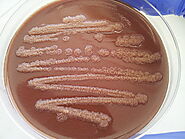-
About
- About Listly
- Community & Support
- Howto
- Chrome Extension
- Bookmarklet
- WordPress Plugin
- Listly Premium
- Privacy
- Terms
- DMCA Copyright
- © 2010-2025 Boomy Labs


 Zelda Myeni
Zelda Myeni
Listly by Zelda Myeni
Pigmentation is very useful for bacteria as well as for our industry. Bacteria are pigmented or coloured.In bacteria pigment formation is well associated with morphological characteristics, cell activities pathogenesis, protection, and survival. Pigments are produced by bacteria to avoid UV radiation. The main character is Melanin which is produced in melanocytes and is the natural skin pigment, therefore embrace yourselves to be taken through the world of Melanin.

P. aeruginosa is a Gram-negative, motile, heterotrophic rod-shaped bacterium that is 1–5 mm long and 0.5–1.0 mm broad.

Melanin is a heterogenous and polymeric pigment produced by eukaryote organisms and several microorganisms through fermentative oxidation. Melanins can be classified into two large types: dark brown eumelanin and yellow or reddish pheomelanin. Melanin has a photoprotective role against radiation in organisms and cells, protecting them from the radiation coming from the UV regions of the visible spectrum and being able to then sequester reactive oxygen species, reducing the damage from UV radiation

Melanin is responsible for producing skin and hair pigmentation. The more melanin you produce, the darker your eyes, hair, and skin will be. The amount of melanin in your body depends on a few different factors, including genetics and how much sun exposure your ancestral population had. Melanin is produced in melanocytes. These cells are located in different areas of your body. When you spend time out in the sun, your body produces more melanin.

Melanin is a term used to describe a large group of related molecules responsible for many biological functions. The overall melanin density correlates with the darkness of the skin. Just as melanin protects the skin from photodamage, it also protects the eye. Melanin is concentrated in the iris and choroid, and those with coloured eyes, as well as albinos, have more sun-related ocular issues. Hair color is determined by the relative proportion of various forms of melanin

Melanin helps protect from UV rays and gives skin its color. Protection against UV light. Melanin helps protect the cells of the epidermis, or the outer layer of the skin, from UV light. Reactive oxygen species (ROS) scavenger. Melanin also demonstrates antioxidant activity by scavenging for reactive oxygen species produced via UV light damage. Without intervention from protective compounds like antioxidants, these ROS contribute to oxidative stress, which causes significant cellular damage.

Melanins are natural biopolymers that are known to contribute to different biological processes and protect organisms from adverse environmental conditions. During the past decade, melanins have attracted increasing attention for their use in organic semiconductors and bioelectronics, drug delivery, photoprotection, and environmental bioremediation.
